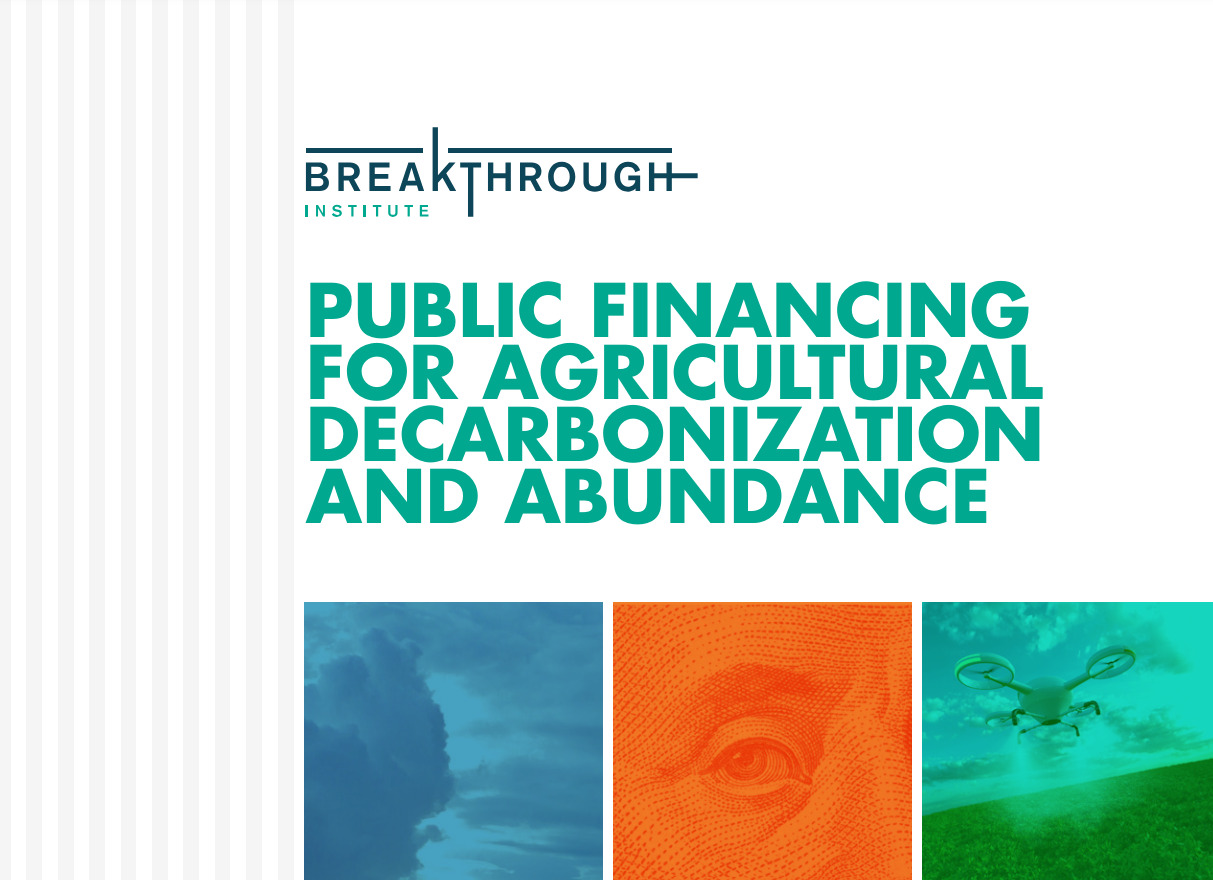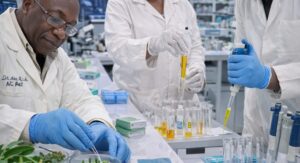While agriculture is a major driver of greenhouse gas emissions, companies seeking to help the sector decarbonize “receive scant support from the federal government,” according to a new report from environmental think tank The Breakthrough Institute, which makes the case for “a far more interventionist approach.”
The report—which you can download here—argues that the US Department of Agriculture (USDA) “ought to mirror the Department of Energy (DOE)” which it says offers support to companies at the research, development, demonstration, and deployment stages, with initiatives explicitly targeting the technological and commercialization ‘valleys of death.’
“Increasing agricultural research and development funding — which has been diminishing for decades — and investing in the innovations needed to bring about climate-friendly, low land-use, and affordable food abundance will be crucial for the next generation of US food and farming.”
Inflation Reduction Act
The Inflation Reduction Act (IRA) set aside nearly $20 billion for agriculture, notes the report. However, the funding is primarily for programs aimed at incentivizing the adoption of measures such as no-till and cover crops, which “have limited and variable potential to achieve long-term climate mitigation,” with the bulk of the funding going towards energy production, transportation, and infrastructure.
On the plus side, notes the report, as part of its new CDR (carbon dioxide removal) Purchase Pilot Prize, the DOE is providing up to $35 million in the form of offtake agreements from the federal government in carbon dioxide removal pathways including enhanced weathering and mineralization technologies, which are highly applicable to agricultural lands.
“But making agriculture a sub-priority of DOE programs is not enough.”
An underinvested industry
Governments may not have a great track record for picking winners (remember Solyndra), concede the authors. But private seed, angel, and venture capital investors typically “fund early-stage research and development but lack the funds or will to support firms through scale-up of manufacturing activities,” leaving many companies floundering in the valley of death.
“Even for climate-focused investors, food and agricultural technologies play second fiddle. In 2022, only 4.3% of total climate finance — which includes both private and public sources — went to food and agriculture. Similar to US public funding’s focus on energy and transportation, global climate funders have typically ignored the food system.”
Policy recommendations
The report concludes with a series of policy recommendations that would inject what it claims is desperately needed capital into the agrifoodtech space at each innovation stage:
- R&D stage: Double federal research funding for major agricultural R&D agencies and programs including the National Institute of Food and Agriculture (NIFA) and the Agricultural Research Service (ARS) and fully establish the Department of Agriculture’s Advanced Research Authority (AgARDA) to develop innovative technologies at USDA.
- Demonstration stage: Fund testbeds through ARS and NIFA to evaluate and measure the environmental impacts of agricultural technologies and practices. Establish an Office of Food and Agriculture Technology Demonstration at USDA to focus on bridging the gap from R&D to market adoption for emerging food and ag technologies and products with decarbonization potential.
- Deployment stage: Support and prioritize innovation under USDA direct and guaranteed loan programs such as the Food Supply Chain Guaranteed Loan Program and the Business & Industry Loan Guarantee Program to enable the expansion of commercial scale production of lower-carbon food products and technologies. Establish a Loan Programs Office at USDA (mirroring that of the DOE) to explore ways to provide larger loans to catalyze innovations with decarbonization potential for the food and ag sector. Establish a sustainable agriculture investment tax credit to encourage investments in sustainable agriculture technologies and systems, especially those with high upfront costs.
Further reading:





